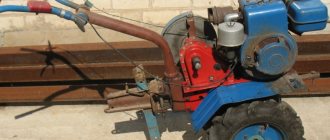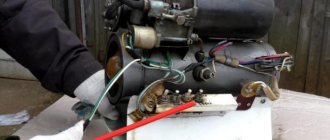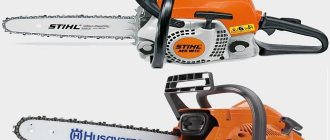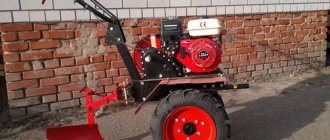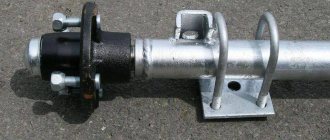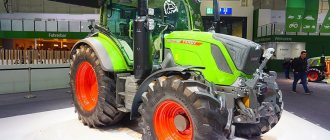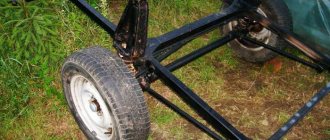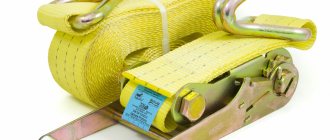What types of designs are there?
In simple terms, a trailer axle is a metal rod that connects 2 wheels. Accordingly, if the trailer is biaxial, then there will be two such pipes.
Axles for a two-axle trailer are assembled on a subframe
In this case, the axle on the trailer can have a different shape:
- round;
- square;
- rectangular.
A square and a rectangular trailer beam are essentially the same thing. They have the same features and parameters.
With identical wall thickness, diameter, and cross-sectional area, the bending strength will be higher in square (rectangular) structures.
Round welded trailer axle
In terms of strength, it is the square axles for trailers that benefit. Round ones are more susceptible to deformation. They are easier to bend. Consequently, they can withstand less operating load.
This is relevant if you are going to load your equipment to the limit, or even higher.
Also, the axle for a passenger trailer can be:
- collapsible;
- non-separable (welded).
Collapsible trailer axle
Everything is simple here. Collapsible ones can be disassembled, serviced, and also repaired. Welded ones do not have such capabilities. But they are considered more reliable.
One more thing. The axle usually comes with brakes (rarely) and a hub. Pay attention to this too.
In a collapsible axle, the hub is bolted and sometimes has two seats, as, for example, in Kurgan trailers. This allows you to increase the ground clearance if necessary, and replacement is done by removing and installing.
For the non-separable model, the hubs are welded. If a replacement is needed, cut off the old hub and weld a new one. But it's not safe. It's better to replace the entire axle.
Welded axle hub for a light trailer
The process of assembling an axle for a passenger car trailer
At this point, if you want to assemble a trailer axle, you should already have the frame and wheels ready. The sequence of actions is as follows:
- Choose a beam (with a round or square cross-section, whichever you like best);
- Next, connect the hub axle with fasteners using bolts or welding to the already selected beam. The hub should fit into the main pipe by about a couple of millimeters;
- If your trailer is single axle, then install the axle at a distance that is 40% of the length of your trailer from the tailgate. At this stage, measurements must be made with maximum accuracy;
- Then turn the trailer over so that the bottom is on top and make sure that the spindles are not in the way;
- The axle installation site must be thoroughly cleaned. Next, measure and divide the distance between the bushings by two, then make marks;
- Connect the axle to the frame by spot welding along the entire contacting surface;
The assembly process is complete. All that remains is to mount the sides with wheels.
It should also be clarified that in addition to spring and torsion bar suspensions, you, like many craftsmen, can install a spring-shock-absorbing suspension on your just-made trailer, which provides a much softer ride.
Source twimg.com
The homemade axle for the trailer is ready.
I recommend the following video, where the author explains in detail how he made his own trailer axle:
Axle combined with suspension
You need to look not only at the axle itself, but also at the suspension design with which the axle is used. The following options are possible:
- spring dependent;
- independent rubber-harness (torsion bar);
- independent torsion bar;
- dependent spring;
- independent lever-spring.
Spring trailer suspension
Spring suspensions are less common than torsion bar (rubber-harness) and spring structures. But they still have every right to exist.
Design options
For some, it is easier to order a ready-made axle rather than assembling something yourself. But if you know how to do it or want to understand how all this is made with your own hands, I suggest you simply buy or find the appropriate parts and assemble a full-fledged axle from them.
But which one? The trailer axle, as a suspension element, is just a pipe. It comes in two types, depending on the cross-section:
- round;
- square.
If we take identical parameters of wall thickness, cross-sectional area and diameter, then the square versions will require more effort to bend. That is, they are stronger than round ones.
Also, the assembled axle comes with a hub and brakes (not everywhere). Mainly 2 types of hubs are used:
The price and repairability are better for the chamomile, although the block hubs are more reliable and durable at a higher price. They can only be replaced as an assembly. I don’t see anything bad here, since it simplifies the replacement procedure and maintenance of the trailer.
The hubs are welded or screwed. The latter connection method is actively used on Kurgan trailers. Accordingly, between a welded and prefabricated structure, I would give preference to the latter due to a simpler approach to repair and maintenance. But it's up to you.
On trucks and, less commonly, on passenger cars, trailers can come with a swivel axle, where the entire axle rotates along a vertical axis using a kingpin turntable.
The suspension or axle used on caravans is:
- torsion bar (with and without brakes);
- spring (with and without brakes).
We will look at them in more detail.
Spring and torsion bars
Torsion bar models are now very in demand and popular. This can be explained by objective advantages:
- serve for a long time;
- no difficulties in operation;
- simple maintenance;
- it is not necessary to use shock absorbers;
- are small in size;
- the space between the axle and the frame is reduced;
- have a small mass;
- These are designs with independent suspension at the trailer wheels.
Torsion bar or rubber harness structures are equipped with a rigid fastening to the frame. There is a polygonal pipe mounted to a frame, inside of which there is a pipe of a similar shape, only with a smaller diameter. The free space between them is filled with special rubber bands. They make it possible to ensure the immobility of the inner tube connected to the wheel.
Torsion bar vs spring
To change or assemble a trailer axle with your own hands, you first need to make a choice.
In fact, the choice is between torsion bar and spring structures.
It is quite possible to install springs on a regular axle (without a torsion bar). This can be your own modification, or a design provided from the factory. I have repeatedly seen people strengthening a trailer in this way.
Torsion systems
Trailer torsion axle
Torsion bar includes a polygonal pipe, and inside it there is another pipe. Rubber bands protect it from turning.
The inner tube is connected by levers, due to which the wheels are held on the axle.
An important advantage of a torsion trailer axle is that all key moving elements are hidden in the tube and do not require maintenance.
Pros and cons of torsion bars
This torsion axle for a passenger trailer boasts the following strengths:
simplicity of design;
reliability;
relatively small weight;
ease of self-installation;
unpretentiousness during operation;
reduces the gap between the frame and axle.
But don't rush to conclusions. This trailer axle also has its drawbacks.
The disadvantages are as follows:
short stroke (this is noticeable on uneven roads);
lack of shock absorbers (when driving, the trailer often bounces on uneven surfaces);
not suitable for those who need to heavily load the trailer;
low repairability;
“tanned” in the cold;
the price is quite high.
Therefore, it is logical to look at an alternative option.
Spring system
Trailer spring suspension
Unlike a torsion bar, this axle is better adapted to high loads. It is characterized by rigidity, long stroke and reliability.
If you are looking for a trailer for active work in agriculture, then it is best to choose equipment with springs.
Pros and cons of leaf spring suspension
The strengths here are:
increased endurance;
structural strength;
stability when driving on bad roads.
Don't forget about the shortcomings.
The spring trailed axle is characterized by the following disadvantages:
maintenance needs;
lower ground clearance (clearance) than a torsion bar;
The design is more complex in terms of installation.
Assembling such an axle for a car trailer with your own hands will be a little more difficult. But it's still possible.
A little about the axle, suspension and hubs
You can buy a ready-made axle, but if you are here and reading this, you understand that a homemade trailer axle will cost much less, you will get a general idea of the work of the axle and, possibly, pleasure.
The axle itself is a simple suspension element, but in fact it is a pipe, which can be square or round.
If we compare the strength of these two types of axles (with the same wall thickness), then the square one is naturally better. However, axes with a square section are not used in everyday life. Since they are more expensive, both to purchase/produce and to maintain.
When you buy an axle, it comes with hubs, which often come with brakes. But if you assemble the axle with your own hands, then you will have to connect them to the axle with your own hands. Therefore, you should know that hubs come in two types:
- Block (more reliable, durable, but also expensive);
- Chamomile (they are simpler, less reliable, and, naturally, cheap);
Since you don't have to take them apart when replacing hubs, this makes trailer maintenance easier. In this regard, the chamomile type of hubs is popular.
There are two ways to connect the hub to the axle - welded or bolted.
Welding the hub to the axle is a more reliable method, but if the hub breaks and there is a need to replace it, it will be extremely difficult to remove it.
There are two types of pendants:
- torsion bars;
- spring;
Torsion bar models are more in demand, which is easily explained, because they:
- durable;
- extremely easy to use;
- compact and weigh relatively little;
- they also do not need shock absorbers;
The torsion bar suspension is rigidly connected to the frame. It consists of an empty pipe (polygonal), inside which is exactly the same, but of a smaller diameter, which also serves as an internal shaft, and the wheel is attached to it. The smaller pipe is wrapped with rubber gaskets (bundles) so that all the empty space between the pipes is filled with them.
Torsion bar suspensions are suitable for use in the city and on asphalt roads.
Spring suspensions are stiffer and more resistant to loads. Such suspensions are suitable for use in normal and extreme conditions. The disadvantage of this type is that it is more expensive and requires maintenance.
Source vpm-parts.ru

